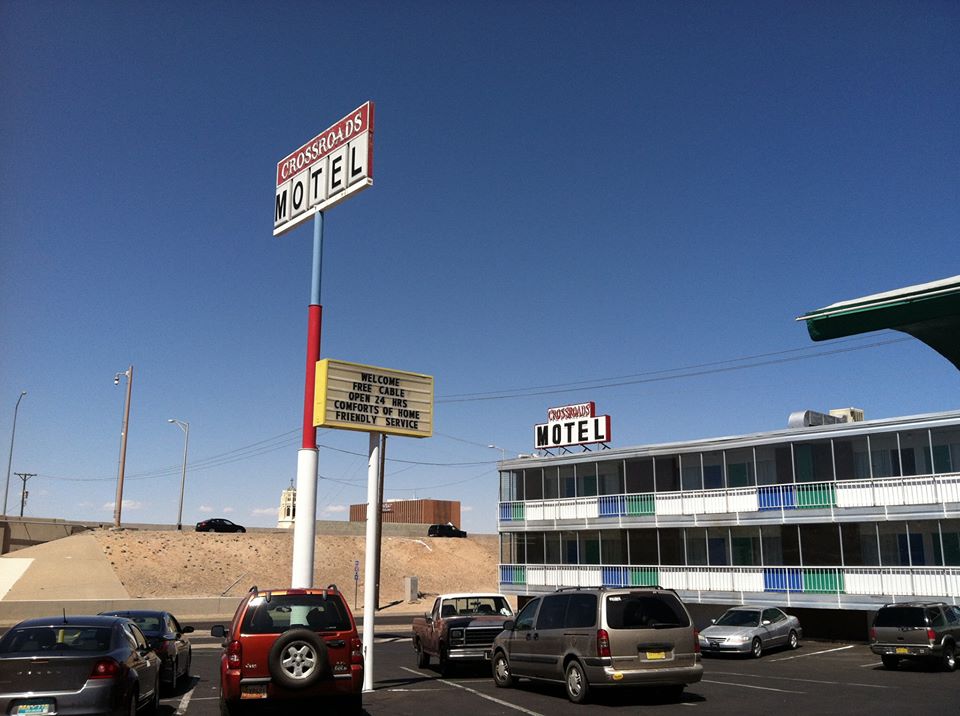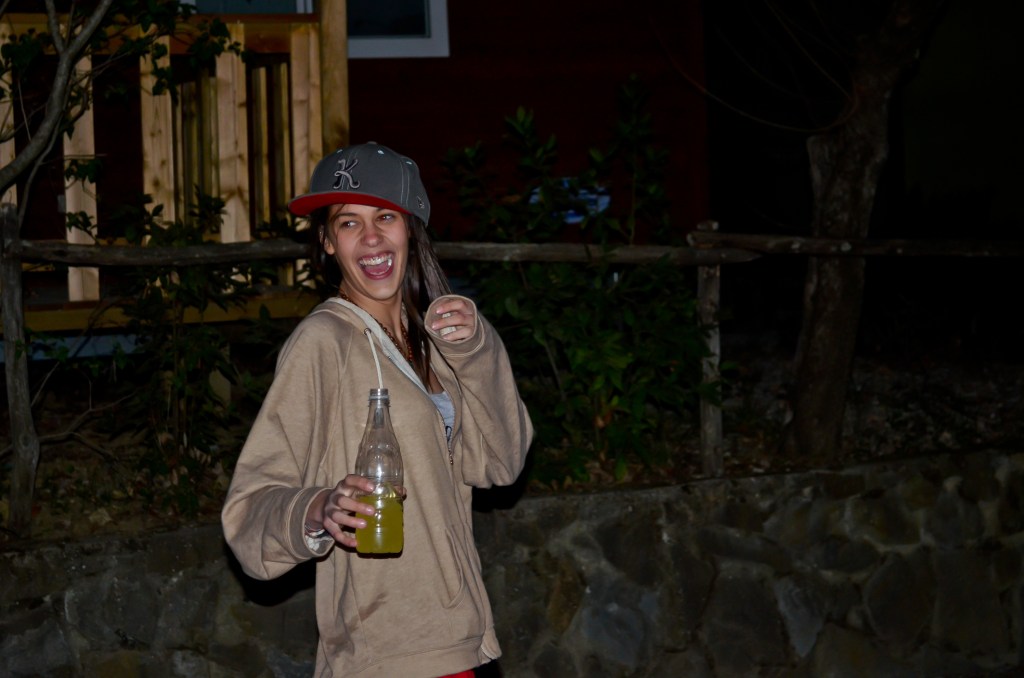Breaking Bad, considered one of the greatest TV shows of all time, won nearly every television award in existence. Its spin-off prequel set six years prior, Better Call Saul, has also been critically acclaimed; as was El Camino, a feature-length film presented as an epilogue to Bad and released late last year on Netflix. For over a decade, creator Vince Gilligan has slowly been building out his own fictional universe in the Southwest, filled with con men, cartels, crime syndicates posing as fast food companies, and, of course, bright blue meth.
But one of Gilligan’s more incidental accomplishments during this time was helping to put Albuquerque, New Mexico on the map—not only as a major filming hub (Netflix bought Albuquerque Studios for close to $30 million in 2019, and signed an agreement promising $1 billion in production spending over the next decade), but as a destination for Breaking Bad and Better Call Saul fans. In both shows, the city of Albuquerque becomes as much of a central character as chemistry-teacher-turned-meth-cook Walter White (Bryan Cranston) or smarmy attorney Saul Goodman (Bob Odenkirk), with most scenes shot on location throughout the region.
Videos by VICE
No one knows Albuquerque better than Miguel S. Jaramillo, who has tracked nearly all of Breaking Bad’s and Better Call Saul’s filming locations since the shows began. A New Mexico native, Jaramillo co-created a Breaking Bad fan fest in 2014 and runs the unofficial Instagram account of Breaking Bad/ Better Call Saul filming locations, where he offers backstory about specific locations seen on-screen and what locations doubled for what sets.
We caught up with Jaramillo in time for the premiere of Better Call Saul’s fifth season with a spoiler-filled talk about the changes in Albuquerque since the shows came out, which filming locations to check out, and the best way to visit cool spots from Bad and Saul that doesn’t involve throwing pizza on somebody’s roof.
VICE: Hi, Miguel. Did you start watching Breaking Bad when it first debuted in 2008? What were your first impressions?
Miguel Jaramillo: I didn’t watch until around the middle of season three. For the first few years, there had been some negative press because of how Breaking Bad depicted meth and Albuquerque. But I had also heard friends say how good it was, so I quickly binged the series to catch up before season four. Honestly, I was pretty impressed with how accurately and realistically Breaking Bad and, later, Better Call Saul, presented Albuquerque.
When did you launch the Instagram account?
Around the middle of 2011, with the start of Breaking Bad’s fourth season. I recognized most of the show’s filming locations—like the car wash where Walt worked part-time, which is a massive building in Albuquerque’s Northeast Heights. But there were several areas that I wasn’t familiar with, like Gus Fring (Giancarlo Esposito)’s industrial laundromat, located on Candelaria Road; or the desert areas where Walt and Jesse first cooked meth, which has since become somewhat common knowledge as being located on an Indian reservation called To’Hajiilee, about 45 minutes west of Albuquerque.
I got curious about the places I didn’t know, so I looked online and found a blog run by another fan of the show, Marc Valdez, who was tracking down and documenting locations. As time went on, Marc and I got in contact and we started to work together to find areas that appeared in new episodes. I thought it would be great to have a way for fans to easily look up the locations while on the move, which is what inspired the Instagram account.

What has the response been? Do these various places mind being put “on the map” for fans to find?
The response to the Instagram has been huge; I never realized how many people were interested in these random, behind-the-scenes areas. When I was starting out, I went around to the different locations to ask questions about what their experience was with Breaking Bad. There was an obvious difference between the places that embraced the exposure versus those who weren’t into it at all.
The ones who don’t like it and who have been negatively impacted, in my opinion, are the private residents. Especially the owners of the house that served as the setting for Walter White’s residence. The family that lives there has resorted to fencing off their property because of constant trespassing and pizza-throwing by “fans.” Which is ironic because, by the end of Breaking Bad, that house is fenced off in the show, too, because it has also become a tourist attraction.
Usually, businesses love the publicity. Like Twisters [Burgers and Burritos], a New Mexico chain that doubles as the flagship location of Gus’ fried chicken restaurant. At that specific Twisters, on Isleta Boulevard, there’s a “Los Pollos Hermanos” mural that’s still inside on the wall. Then there are people like Debbie Ball, “The Candy Lady,” who made the fake meth (it’s rock candy) for the first season of Breaking Bad, and who now has a whole section of her shop dedicated to Breaking Bad merchandise. There’s even an entire Breaking Bad store, kinda near where Debbie is in Old Town, started by two fans of the series.
Is this the norm? Do most Albuquerque businesses that get prominently featured on Bad or Saul start selling merchandise for the show?
Places like the car wash and Loyola’s [Family Restaurant] in Highland, where Mike likes to go, do carry memorabilia, like postcards and shirts. In terms of custom items, like the rock candy meth, not as much. Twisters hasn’t started selling fried chicken; I was kinda wishing they would but they’re an established burrito-and-burger place. Same thing for The Dog House, featured on Bad and Saul. It’s a chili cheese dog place, so that’s what they’re sticking to.
But sometimes local companies have fun with it. There’s one scene in Bad where Mike Ehrmantraut (Jonathan Banks) drinks a beer from Marble Brewing Company, which is an Albuquerque brewery, and Marble decided to make some Breaking Bad-inspired beers—a black IPA called “Heisenberg’s Dark” and a white IPA called “Walt’s White Lie.”
It’s a shame that no one started producing Zafiro Añejo, the fictional tequila that Gus uses to poison the Mexican cartel in season four. Apparently, there weren’t any real tequila companies that wanted to be associated with people drinking their product and dying on-screen.
They could be selling that tequila! It’s one of those things that maybe you only realize is a good move in hindsight. Which I think is true in general, for Albuquerque businesses and Breaking Bad and Better Call Saul. People want to come here; let’s use this as an opportunity.

Albuquerque struggles with a real-life reputation of being a hub for drugs, including meth. Have Bad and Saul helped shine a light on these issues, or do they just trivialize them?
Albuquerque’s drug problem is certainly an issue that we deal with on a daily basis. But so do other cities our size and larger. I think it’s a matter of perception. Statistically, Albuquerque’s crime has worsened since 2008, but the city is much safer than its representation on-screen. It’s easy to take a show about crime that’s set here and say it’s a negative take on our city. But Bad and Saul also present certain aspects of Albuquerque that surprise me, like how accurately and beautifully they capture New Mexico’s scenery. Or the fact that Bad depicts characters like Gretchen and Elliott—two billionaires who live in a mansion and drive around in a Bentley—living in Albuquerque.
Since Breaking Bad began, I feel there’s been a strong increase in a sense of local pride. More New Mexico businesses who are embracing aspects of this place, more Albuquerque businesses in general, and even little things, like seeing more people getting the Zia sun [a symbol of the indigenous Zia Pueblo Native Americans which also prominently appears on the New Mexico flag] tattooed on themselves. I think part of this is related to the show and better appreciating how unique Albuquerque is.
Are there any Easter eggs in Bad or Saul which are callbacks to New Mexico culture that you can share with fans outside of Albuquerque?
There are a lot of little things. Like how Lydia Rodarte-Quayle (Laura Fraser) goes to The Grove Cafe on Central Avenue, where she ends up getting poisoned with stevia by Walt. If you’re from here, you’d know that The Grove would exactly be the type of trendy place where someone like Lydia would go in real life. Another callback is when you see props, like a takeout bag from Blake’s Lotaburger. Your average viewer probably thinks that’s a made-up restaurant with a strange name, but Lotaburger is very much an Albuquerque fast food institution. My understanding is that these products and places appear because that’s where the crew and writing staff would go and they’d discover these spots. In a flashback from the episode “Ozymandias,” Walt suggests the family take a day trip to the Turquoise Trail, explore Tinkertown, and maybe get lunch in Madrid. This is a realistic way to spend an afternoon and it’s actually a trip that the show’s creator, Vince Gilligan, took with his girlfriend.
Something fun from behind-the-scenes is that, when Breaking Bad started, the filming location signs were just marked with “Br Ba,” the chemical symbols. But as the show got closer to the finale, they tried to be more covert. There was an LRQ location sign, named after the initials of Lydia Rodarte-Quayle. And when Better Call Saul started, the signs were HHM, named for the law firm from the show that no one knew yet, Hamlin, Hamlin, & McGill.
A different type of Easter egg is when the geography sometimes doesn’t make sense. For example, there’s a scene in Saul where Jimmy is traversing through the desert, from one part of Albuquerque to another. If you’re from here, you know his path is ridiculous. In one scene of Bad, Walt is travelling through To’hajiilee and suddenly he cuts through the middle of downtown Albuquerque. One thing that’s not really an Easter egg but I like is finding out that certain characters are played by real-life Burqueños, like Steven Michael Quesada, who was born and raised in New Mexico and plays DEA agent Steve Gomez on Bad.

For fans who want to visit Albuquerque and see locations from the Breaking Bad universe, what’s the best way—or, at least, the most respectful way—for them to proceed?
Check out the tours. Most of the guides—like Frank Sandoval, who drives visitors between different filming locations in a replica of Walt and Jesse’s RV—have a good rapport with owners of the homes or businesses.
Aside from that, I’d recommend visiting places where you can experience something aside from just taking pictures. There are a lot of great outdoor scenes in Bad and Saul that are scenic and worth exploring, like where the vacuum guy picks up Walt and almost picks up Jesse; that’s the John B. Robert Dam, easily accessible. Walt shoots Mike along the [Rio Grande] bosque, which has a lot of beautiful hiking areas. Order a burrito from the “Pollos Hermanos” Twisters in the South Valley or eat chili dogs at The Dog House or have a delicious breakfast at The Grove.
Maybe just hold off on the stevia.
Better Call Saul resumes February 23 on AMC.




